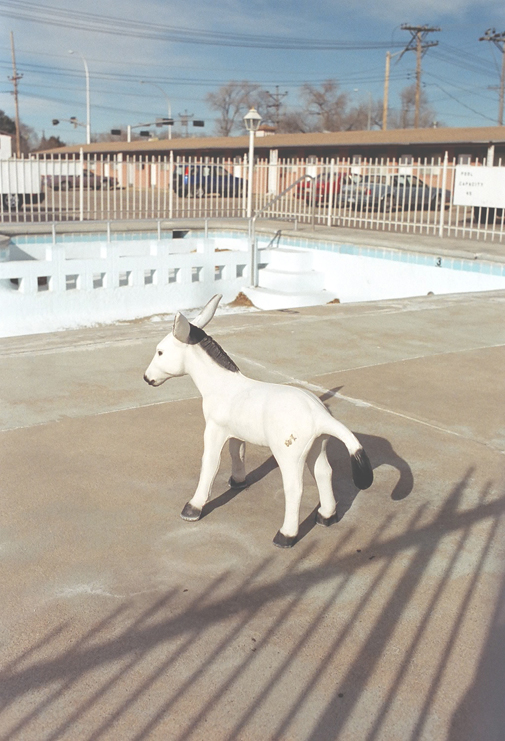- Vol. 02
- Chapter 05

Excerpt from the Fortean Times, 26 March 3143
Equine-noctial Omen by FT correspondent Cassandra Shaman
Flattermen dismantling a centuries-old ‘leisure complex’ near Swindon’s derelict Heathrow Terminal 77 have in recent days uncovered a large sunken concrete structure thought to be a rare Plastic Age burial.
In an area once famed for its primitive images of horses carved into chalk hillsides, the discovery of a tomb containing a small man and an entire herd of miniature chalkstone horses is sparking intense debate among scholars and public alike.
On 20 March – a date known in Seasonal Times as the Spring Equinox – the astonished Flatters unearthed a single small white horse (pictured), but as the clearing continued an entire herd of more than fifty stood revealed – and among them, laid out in patterned silks and leather knee-boots, and holding a leather-covered stick, the body of a small man.
The horse statues are unsigned, but may have been carved from blocks of the last stretch of chalk downland to be levelled in the Great Deconstruction at the turn of the 29th century.
The date of the burial’s discovery, and its similarity to the Terracotta Army found in a Chinese tomb more than a thousand years ago, have many believing that the ‘Small Man’ is a lost figure of legend. ‘We are looking at a belief system that was thought to have died out with the Italian invasion over three thousand years ago,’ said Time Team presenter Morrie Smidgen. ‘But whoever buried this small man in ceremonial silks, crop in hand, with his horses around him, believed that one day the levelled hills would rise, and he would wake, and ride the Downs again.’
‘However,’ he continued, ‘I am very to disappoint your readers, but I must stress that he is most unlikely to have been King Arthur.’
